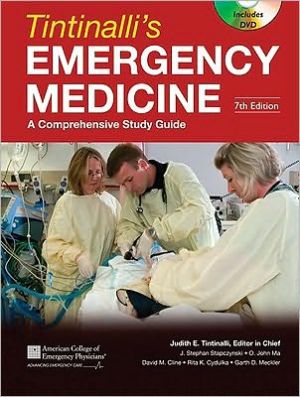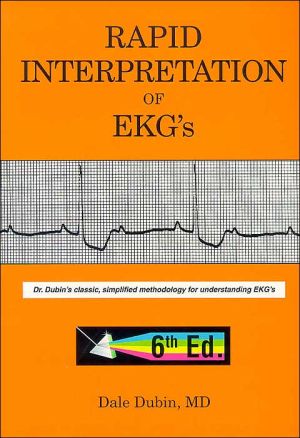Principles and Practice of Child and Adolescent Forensic Mental Health
This timely and authoritative sourcebook covers issues ranging from child custody to litigation concerns as it walks clinicians through the legal thickets of depositions and courtroom testimony. Principles and Practice of Child and Adolescent Forensic Mental Health expands on its predecessor volume Principles and Practice of Child and Adolescent Forensic Psychiatry, winner of the 2003 Manfred S. Guttmacher Award, to address twenty-first-century concerns, from telepsychiatry to the Internet,...
Search in google:
When care of younger patients raises thorny legal questions, you need answers you can trust: that’s why this book belongs on every clinician’s reference shelf. Principles and Practice of Child and Adolescent Forensic Mental Health is a timely and authoritative source that covers issues ranging from child custody to litigation concerns as it walks clinicians through the often-confusing field of depositions and courtroom testimony.The book expands on the 2002 volume Principles and Practice of Child and Adolescent Forensic Psychiatry winner of the 2003 Manfred S. Guttmacher Award, to meet pressing twenty-first-century concerns, from telepsychiatry to the Internet, while continuing to cover basic issues, such as forensic evaluation, psychological screening, and the interviewing of children for suspected sexual abuse, that are important to both new and experienced practitioners. Many of its chapters have been entirely rewritten by new authors to provide fresh insight into such topics as child custody; juvenile law; abuse, neglect, and permanent wardship cases; transcultural, transracial, and gay/lesbian parenting and adoption; and the reliability and suggestibility of children’s statements. It also includes significant material not found in the previous volume: • Two chapters on special education offer an introduction to screening instruments and help practitioners determine a child’s potential need for special education programs and services.• A chapter on cultural competence helps readers improve the accuracy and responsiveness of forensic evaluations and minimize the chance of an unjust outcome resulting from misguided expert opinion.• The section on youth violence features three new chapters—Taxonomy and Neurobiology of Aggression, Prevention of School Violence, and Juvenile Stalkers—plus a newly written chapter on assessment of violence risk, offering guidance on how to confront problems such as bullying and initiate effective family interventions.• A chapter on psychiatric malpractice and professional liability addresses these legal concerns with an eye toward cases involving minors.• A chapter on psychological autopsy covers evaluation of the circumstances surrounding pediatric suicides, describing various types of equivocal deaths and discussing legal issues such as admissibility of the autopsy in court.• A newly written chapter on the Internet expands the previous book’s focus on child pornography to help practitioners deal with issues ranging from online threats to emotional and legal consequences of interactions in cyberspace. This is a valuable reference not only for practitioners in psychiatry and the mental health field but also for attorneys and judges. It opens up a field that may be too often avoided and helps professionals make their way through legal thickets with confidence. Doody Review Services Reviewer:Louis J. Kraus, MD(Rush University Medical Center)Description:This comprehensive book on child and adolescent forensic psychiatry is an update of Principles and Practice of Child and Adolescent Forensic Mental Health, Schetky and Benedek (American Psychiatric Publishing, 2002). With many rewritten and new chapters, the book covers a wide range of child and adolescent forensic mental health topics, including the basics of forensic psychiatry, legal regulation of practice, child custody, child abuse, youth violence, juvenile offenders, and civil mental health litigation. Purpose:It is intended as a resource for both clinicians and forensic experts who deal with children and adolescents, such as psychologists, social workers, psychiatrist, mental health clinicians, attorneys, and judges. The book has been expanded to include new topics such as forensic telepsychiatry, cultural competence, and forensic issues on the Internet, as well as new information on a variety of topics from the previous edition. Audience:It is a challenge to write a book to meet the needs of such a wide variety of professionals, but the authors are successful. The chapters typically begin with a brief description of the topic, followed by comprehensive explanations. A broad range of annotative references help readers gain a more specific understanding of a topic. This is a very well written book edited by leaders in their field. The contributors include experts with international reputations as well as private practitioners and residents.Features:Introductory chapters cover key general issues important to child and adolescent forensic psychiatrists, including a general introduction to the legal system, ethical issues, and testifying in court. The major pertinent issues in child and adolescent forensic mental health are covered including treatment issues such as disability, child custody, child abuse, juvenile delinquency, and civil litigation. The sections that provide an overview of juvenile offenders and civil litigation are particularly helpful. Chapters dealing with child custody and child abuse are areas that have been previously reviewed, but each chapter addresses somewhat newer areas. For example, issues of child custody also touch on transcultural, transracial, and gay and lesbian parenting and adoption. In addition to chapters on physical and sexual abuse, there is also a chapter on Munchausen syndrome by proxy, or factitious disorder by proxy, which provides a well rounded understanding of the clinical issue while attempting to explain the lack of a definitive DSM-IV diagnosis. The clinical vignettes in this chapter and others are particularly helpful. In addition to many of the typical areas covered in forensic books, this one also covers special education evaluations, which includes an explanation of special education law and the process of special education assessments and meetings. The format of the chapters varies. Most commonly, they start with either case vignettes or definitions before going into the details of the assessment, pertinent case law, and references. References offered primary and secondary publications and case law, both state and federal. Assessment:In general, the book does a tremendous job of summarizing the current literature, reviewing pertinent case law, and then applying this to the topics. The editors have tremendous expertise in child and adolescent forensic psychiatry, yet there is very little description of their own personal opinions on key issues, including areas of future growth and understanding, areas needing reform, and a clear understanding of areas of conflict and concern. However, this may be the most comprehensive and up-to-date book on child and adolescent forensic mental health. With the many changes in the juvenile justice system and other areas of child and adolescent forensic mental health, it is certainly worthwhile to replace the first edition.
Foreword. Preface and introduction. Part I: Basics. Introduction to the legal system. Ethics of child and adolescent forensic psychiatry. Introduction to forensic evaluations. Testifying: The expert witness in court. Special education: screening tools, rating scales, and self-report instruments. Psychological testing in child and adolescent forensic evaluations. Forensic telepsychiatry. Cultural competence in child and adolescent forensic mental health. Part II: Legal Regulation of Practice. Legal issues in the treatment of minors. Legal aspects of intellectual disability. Part III: Child Custody. Child custody evaluation. Parenting assessment in abuse, neglect, and permanent wardship cases. Children in foster care. Adoption. Special issues in transcultural, transracial, and gay and lesbian parenting and adoption. Part IV: Child Abuse. Reliability and suggestibility of children’s statements: from science to practice. Interviewing children for suspected sexual abuse. Forensic issues in Munchausen by proxy. Forensic issues and the Internet. Part V: Youth Violence. Taxonomy and neurobiology of aggression. Assessing violence risk in youth. Prevention of youth violence. Prevention of school violence. Juvenile stalkers. Part VI: Juvenile Offenders. Overview of juvenile law. Juvenile waiver and state-of-mind assessments. Assessment and treatment of juvenile offenders. Sexually aggressive youth. Part VII: Civil Litigation. Civil litigation and psychic trauma. Malpractice and professional liability. Psychological autopsy in children and adolescents. Evaluations for special education. Clinical and forensic aspects of sexual harassment in school-age children and adolescents. Index.
\ From The CriticsReviewer: Louis J. Kraus, MD(Rush University Medical Center)\ Description: This comprehensive book on child and adolescent forensic psychiatry is an update of Principles and Practice of Child and Adolescent Forensic Mental Health, Schetky and Benedek (American Psychiatric Publishing, 2002). With many rewritten and new chapters, the book covers a wide range of child and adolescent forensic mental health topics, including the basics of forensic psychiatry, legal regulation of practice, child custody, child abuse, youth violence, juvenile offenders, and civil mental health litigation. \ Purpose: It is intended as a resource for both clinicians and forensic experts who deal with children and adolescents, such as psychologists, social workers, psychiatrist, mental health clinicians, attorneys, and judges. The book has been expanded to include new topics such as forensic telepsychiatry, cultural competence, and forensic issues on the Internet, as well as new information on a variety of topics from the previous edition. \ Audience: It is a challenge to write a book to meet the needs of such a wide variety of professionals, but the authors are successful. The chapters typically begin with a brief description of the topic, followed by comprehensive explanations. A broad range of annotative references help readers gain a more specific understanding of a topic. This is a very well written book edited by leaders in their field. The contributors include experts with international reputations as well as private practitioners and residents.\ Features: "Introductory chapters cover key general issues important to child and adolescent forensic psychiatrists, including a general introduction to the legal system, ethical issues, and testifying in court. The major pertinent issues in child and adolescent forensic mental health are covered including treatment issues such as disability, child custody, child abuse, juvenile delinquency, and civil litigation. The sections that provide an overview of juvenile offenders and civil litigation are particularly helpful. Chapters dealing with child custody and child abuse are areas that have been previously reviewed, but each chapter addresses somewhat newer areas. For example, issues of child custody also touch on transcultural, transracial, and gay and lesbian parenting and adoption. In addition to chapters on physical and sexual abuse, there is also a chapter on Munchausen syndrome by proxy, or factitious disorder by proxy, which provides a well rounded understanding of the clinical issue while attempting to explain the lack of a definitive DSM-IV diagnosis. The clinical vignettes in this chapter and others are particularly helpful. In addition to many of the typical areas covered in forensic books, this one also covers special education evaluations, which includes an explanation of special education law and the process of special education assessments and meetings. The format of the chapters varies. Most commonly, they start with either case vignettes or definitions before going into the details of the assessment, pertinent case law, and references. References offered primary and secondary publications and case law, both state and federal. "\ Assessment: "In general, the book does a tremendous job of summarizing the current literature, reviewing pertinent case law, and then applying this to the topics. The editors have tremendous expertise in child and adolescent forensic psychiatry, yet there is very little description of their own personal opinions on key issues, including areas of future growth and understanding, areas needing reform, and a clear understanding of areas of conflict and concern. However, this may be the most comprehensive and up-to-date book on child and adolescent forensic mental health. With the many changes in the juvenile justice system and other areas of child and adolescent forensic mental health, it is certainly worthwhile to replace the first edition. "\ \ \ \ \ From The CriticsReviewer:Louis J. Kraus, MD(Rush University Medical Center)\ Description:This comprehensive book on child and adolescent forensic psychiatry is an update of Principles and Practice of Child and Adolescent Forensic Mental Health, Schetky and Benedek (American Psychiatric Publishing, 2002). With many rewritten and new chapters, the book covers a wide range of child and adolescent forensic mental health topics, including the basics of forensic psychiatry, legal regulation of practice, child custody, child abuse, youth violence, juvenile offenders, and civil mental health litigation. \ Purpose:It is intended as a resource for both clinicians and forensic experts who deal with children and adolescents, such as psychologists, social workers, psychiatrist, mental health clinicians, attorneys, and judges. The book has been expanded to include new topics such as forensic telepsychiatry, cultural competence, and forensic issues on the Internet, as well as new information on a variety of topics from the previous edition. \ Audience:It is a challenge to write a book to meet the needs of such a wide variety of professionals, but the authors are successful. The chapters typically begin with a brief description of the topic, followed by comprehensive explanations. A broad range of annotative references help readers gain a more specific understanding of a topic. This is a very well written book edited by leaders in their field. The contributors include experts with international reputations as well as private practitioners and residents.\ Features:Introductory chapters cover key general issues important to child and adolescent forensic psychiatrists, including a general introduction to the legal system, ethical issues, and testifying in court. The major pertinent issues in child and adolescent forensic mental health are covered including treatment issues such as disability, child custody, child abuse, juvenile delinquency, and civil litigation. The sections that provide an overview of juvenile offenders and civil litigation are particularly helpful. Chapters dealing with child custody and child abuse are areas that have been previously reviewed, but each chapter addresses somewhat newer areas. For example, issues of child custody also touch on transcultural, transracial, and gay and lesbian parenting and adoption. In addition to chapters on physical and sexual abuse, there is also a chapter on Munchausen syndrome by proxy, or factitious disorder by proxy, which provides a well rounded understanding of the clinical issue while attempting to explain the lack of a definitive DSM-IV diagnosis. The clinical vignettes in this chapter and others are particularly helpful. In addition to many of the typical areas covered in forensic books, this one also covers special education evaluations, which includes an explanation of special education law and the process of special education assessments and meetings. The format of the chapters varies. Most commonly, they start with either case vignettes or definitions before going into the details of the assessment, pertinent case law, and references. References offered primary and secondary publications and case law, both state and federal. \ Assessment:In general, the book does a tremendous job of summarizing the current literature, reviewing pertinent case law, and then applying this to the topics. The editors have tremendous expertise in child and adolescent forensic psychiatry, yet there is very little description of their own personal opinions on key issues, including areas of future growth and understanding, areas needing reform, and a clear understanding of areas of conflict and concern. However, this may be the most comprehensive and up-to-date book on child and adolescent forensic mental health. With the many changes in the juvenile justice system and other areas of child and adolescent forensic mental health, it is certainly worthwhile to replace the first edition.\ \








